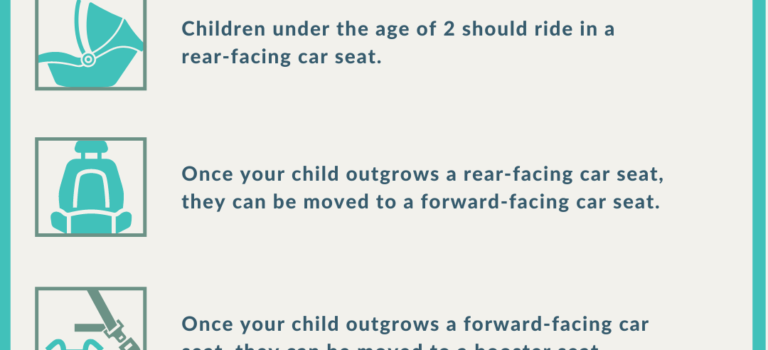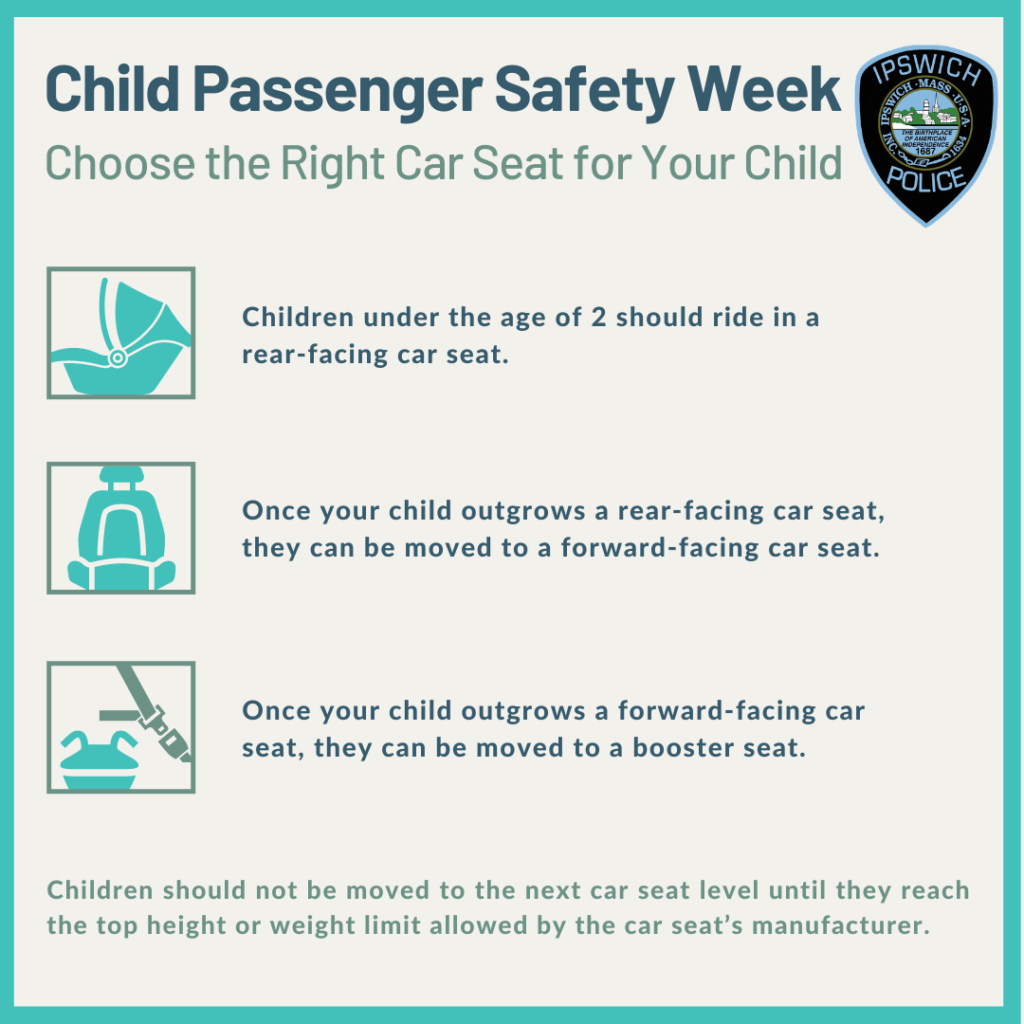Chief Paul Nikas and the Ipswich Police Department would like to remind parents to make sure their children are properly buckled and in the correct car seat for their age and size as part of Child Passenger Safety Week.
Sept. 19-25 is recognized by the National Highway Traffic Safety Administration (NHTSA) as Child Passenger Safety Week.
According to the NHTSA, vehicle crashes are among the leading causes of death for children, with an average of two children under 13 being killed and an estimated 374 injured while riding in vehicles every day in America. Of the 608 child passengers who died in traffic crashes in 2019, 38% were unrestrained, according to NHSTA. That figure was up from 33% in 2018.
All parents are encouraged to have their child’s car seat inspected by a professional.
Ipswich Police Officer David Moore is certified to install car seats and to teach parents how to do so correctly. To schedule an appointment with Officer Moore, email: dmoore@ipswichpolice.org.
To keep your child as safe as possible, Ipswich Police Department recommends the following steps:
Choose the Right Car Seat for Your Child
- Children under the age of 2 should ride in a rear-facing car seat. A rear-facing car seat has a harness, and in a crash it cradles and moves with your child to reduce the stress to the child’s fragile neck and spinal cord.
- Once your child outgrows a rear-facing car seat, they can be moved to a forward-facing car seat. Forward-facing car seats have a harness and tether that limits your child’s forward movement during a crash. Tethers should always be used for forward-facing car seats.
- Once your child outgrows a forward-facing car seat, they can be moved to a booster seat. A booster seat positions the seat belt so that it is properly over the stronger parts of your child’s body. Keep your child in a booster seat until he or she is big enough to fit in a seat belt properly.
- For a seat belt to fit properly the lap belt must lie snugly across the upper thighs, not the stomach. The shoulder belt should lie snug across the shoulder and chest and not cross the neck or face. The proper placement of a seat belt restrains the child safely in a crash.
- Your child should not be moved to the next car seat level until he or she reaches the top height or weight limit allowed by the car seat’s manufacturer. In 2015, an estimated 25.8% of children ages 4 to 7 were prematurely moved to seat belts, when they should still have been riding in booster seats.
- Children under 13 should ALWAYS ride in the back seat.
To use an NHTSA online tool to help you choose the right seat for your child, click here.
Ensure Your Child is Buckled In Correctly
Choosing the correct car seat, but improperly buckling your child into it can lead to serious injury. These steps will help ensure your child is properly buckled in:
- Carefully read the owner’s manual for your car seat to ensure you are properly buckling your child according to the manufacturer’s instructions.
- Always ensure the seat’s chest clip is buckled and at armpit level. If the clip is unbuckled, too high, or too low, a child can slip out of the straps in a crash and suffer serious injury.
- Always ensure the seat’s straps are snug enough that you cannot pinch the straps between your fingers. If the straps are too loose, a child can slip out of the straps in a crash and suffer serious injury.
- Children who are riding in car seats should wear thin clothing, and keep coats or blankets over the seat’s harnesses. Placing jackets or blankets between your child and the straps can lead to your child slipping out of the straps in a crash.
All 50 states and the District of Columbia have laws requiring children to be secured in appropriate car seats or booster seats based on their age and size.
Additionally, Massachusetts law requires that all children ride in an approved child safety seat until they are at least 8 years old or 57-inches tall.
Research shared by the NHTSA has shown that, in passenger cars, properly installed car seats can reduce the risk of fatal injury by 71% for infants and by 54% for toddlers.
For help finding a child car seat inspection station near you, click here.
It is also recommended that all car seats are registered with their manufacturers in case of a safety recall. This step will help ensure that you will be notified if a defect is discovered with your car seat so it can be repaired or replaced to keep your child safe.
To get NHSTA help with registering your child car seat, click here.

